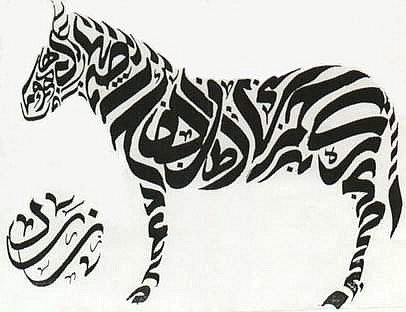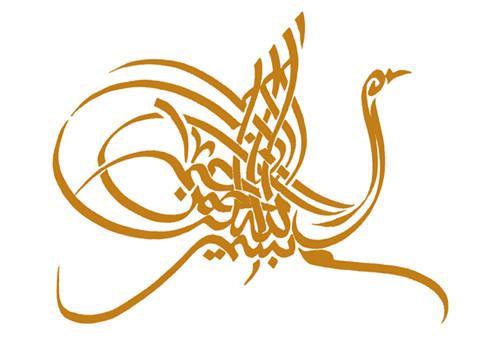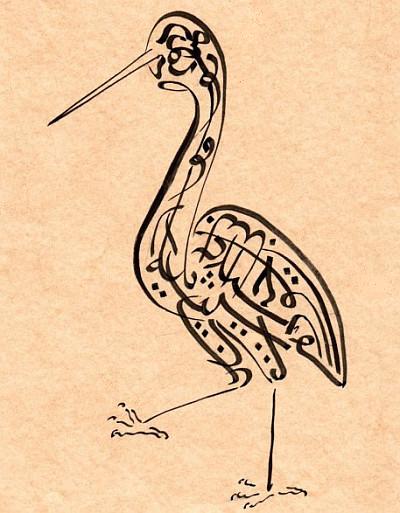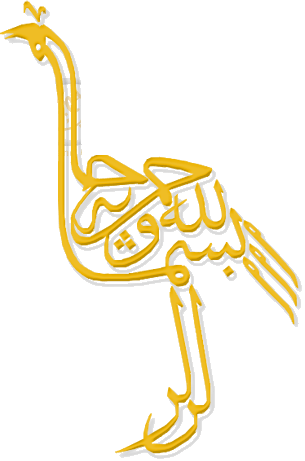Marbling

The art of marbling on paper, or 'ebru' in Turkish, is a traditional decorative form employing special methods. The word 'ebru' comes from the Persian word 'ebr,' meaning 'cloud.' The word 'ebri' then evolved from this, assuming the meaning 'like a cloud' or 'cloudy,' and was assimilated into Turkish in the form 'ebru.' Marbling does actually give the impression of clouds. Another possible derivation of the word 'ebru' is from the Persian 'âb-rûy,' meaning 'face water.'
Although it is not known when and in which country the art of marbling was born, there is no doubt that it is a decorative art peculiar to Eastern countries. A number of Persian sources report that it first emerged in India. It was carried from India to Persia, and from there to the Ottomans. According to other sources, the art of marbling was born in the city of Bukhara in Turkistan, finding its way to the Ottomans by way of Persia. In the West, 'ebru' is known as 'Turkish paper.'

How Marbling is Done
Marbling is a most enjoyable art form, although one requiring great patience. The first thing is to select suitable paper, as not all paper can be used. The paper needs to be hard-wearing and able to absorb the paint thoroughly. Masters of calligraphy in former times preferred to write on what was known as 'dressed' paper, which had had a mixture of cornstarch and egg-white rubbed over its surface. Marbling practitioners? on the other hand preferred raw, 'undressed' paper since the 'dressed' version did not absorb paint well.
A large, wide, shallow and generally rectangular tray is necessary for the practice of marbling. A kind of white gum obtained from the stem of the tragacanth plant is mixed in a bowl with water in specific proportions. Different substances, such as dried orchid tubers, flax or quince seeds and kerosene may be used instead of the tragacanth gum. The mixture is left to stand for up to 12 hours and stirred occasionally. The gum eventually dissolves, and the mixture comes to take on the consistency of boza, a thick drink made of fermented millet.
Later on, the paint for the marbling is prepared in small cups. The paint to be used needs to be ground very finely, and should not be one of those vegetable or chemical paints that do not dissolve in water. After the paint has been dissolved in water in the little cups, two coffee spoonfuls of fresh cattle gall is added. The aim behind this procedure is to prevent the finely ground paint from sinking to the bottom and ensure that it floats on the surface. The paints of various colours prepared in this manner are then spread over the boza-like mixture described earlier which has been emptied into the tray. The paint clings to the surface in small pools, which are then mixed or spread by means of a wooden stick, giving rise to surprising and fascinating designs. Specific designs can also be created according to the artist's wishes. The special paper laid over these designs is lifted to one side some 5-10 seconds later, in very much the same manner as turning the pages of a book, by holding it by two edges and being careful not to smear the paint. The paper is left to dry in a suitable place, the painted side facing upwards. In this way, designs with thousands of details and colours emerge. If the artist wishes to place writing or a flower motif between these designs, he employs another method. The writing or motif is drawn or scratched onto paper. A sharp implement is used to cut them out, and these are then fixed onto the marbling paper with a thin adhesive. The paper is then laid onto the paint in the tray as described above. After the marbling design on the paper has dried, the patterns that have been thinly glued onto the paper are removed, leaving an empty space. This method was discovered by the calligraphy and marbling Master Necmeddin Okyay (1883-1976), for which reason marbling produced by that method is known as 'Necmettin Marbling.' There are several other varieties of marbling, such as 'oversize,' 'combed' and 'flowered.'
Marbling used to be extensively employed in bookbinding and calligraphy. On occasion, particularly interesting and attractive designs are used as pictures. Turkey has produced many great exponents of the art, such as Hatip Mehmed Efendi (18th century), ?eyh Sad?k Efendi (19th century) and Bekir Efendi (early 20th century). Among the last great masters produced after Necmedd?n Okyay, both Mustafa Düzgünman (born 1920) and Niyazi Say?n (born 1927) are particularly worthy of mention.
MARBL?NG on FABRIC:
First you must decide which kind of marble base you will work with;carreenan or a tragacant plant which is the major ingredient for marbling on which the paint float.The solution should be covered when not in use.
Carrageenan is an organic substance extracted from ?rish moss,which can be mixed in cold water(some types need to be cooked)Prepare size/carrageenan by dissolving3-3.1/2 tablespoon carrageeanan with 1 lt. of water using a blender.Then you can fix it pouring more water .9lt.will be enough for standart container(50/35 cm2. 5cmdept).
Allow the solution to stand for 12 hours so that all the bubbles rise to the top and the solution gels to a rubbery consistency or thin gelatinYou must be sure that no lumps remain.To test the consistency, drop paint.?f it expands slowly to a larger circle it has the right consistency.If the paint sinks to the bottom you must dilute the color.Use newspaper strips to skim off any air bubbles from the size surface.

TRAGACANT PLANT
I prefer to use this tradional marble base and paints when I work on fabric allthouguh
?t is risky because the paint fades in time after every cleaning .
You must be very careful when you prepare this solution. You must dissolve 1.-1.1/2 tablespoon subctance in 2 lt. water.(distilled water)and wait 3 or 4 days .You must make hand mixing.After the solution is ready you have to pour it by straining with the help of a muslin ensuring that no lumps remain.Then you have to fix water amount and consistency and test the paints.

ALUM
To bond permanently with the paint, the fabric must be treated with an alum solution.(50gr
Alum (?ap)1lt.hotwater in TURKEY But some use 3 tablespoon alum in one quart cold water)
Stir occasionally until the alum has completely dissolved.
Drop into the alum solution ,let the fabric line-dry without wrinkles. Let dry. ?ron the fabric and use it dropping the center first, place the corners down gently on the marbled surface.Once the piece is completely on the surface size ,carefully pick it up and rinse it in cold water. You can use fixing materials.or iron the fabric.
To fix painting. HAND WASH ALL FABRICS.






 All the above zoomorphic (and anthropomorphic) works are © Hassan Musa from Sudan.
All the above zoomorphic (and anthropomorphic) works are © Hassan Musa from Sudan.




 "Hafez (d. 1390) is Iran’s premier and most quoted lyric poet. His status in his own country, and his universal appeal, can be compared with that of Shakespeare in the English-speaking world. The painter and printmaker Jila Peacock has chosen ten love poems from Hafez and following the footsteps of the great Islamic calligraphers, has produced ten shape-poems that sit by her own translations from the Persian."
"Hafez (d. 1390) is Iran’s premier and most quoted lyric poet. His status in his own country, and his universal appeal, can be compared with that of Shakespeare in the English-speaking world. The painter and printmaker Jila Peacock has chosen ten love poems from Hafez and following the footsteps of the great Islamic calligraphers, has produced ten shape-poems that sit by her own translations from the Persian."
 17th century album leaf from Ottoman Turkey.
17th century album leaf from Ottoman Turkey.

